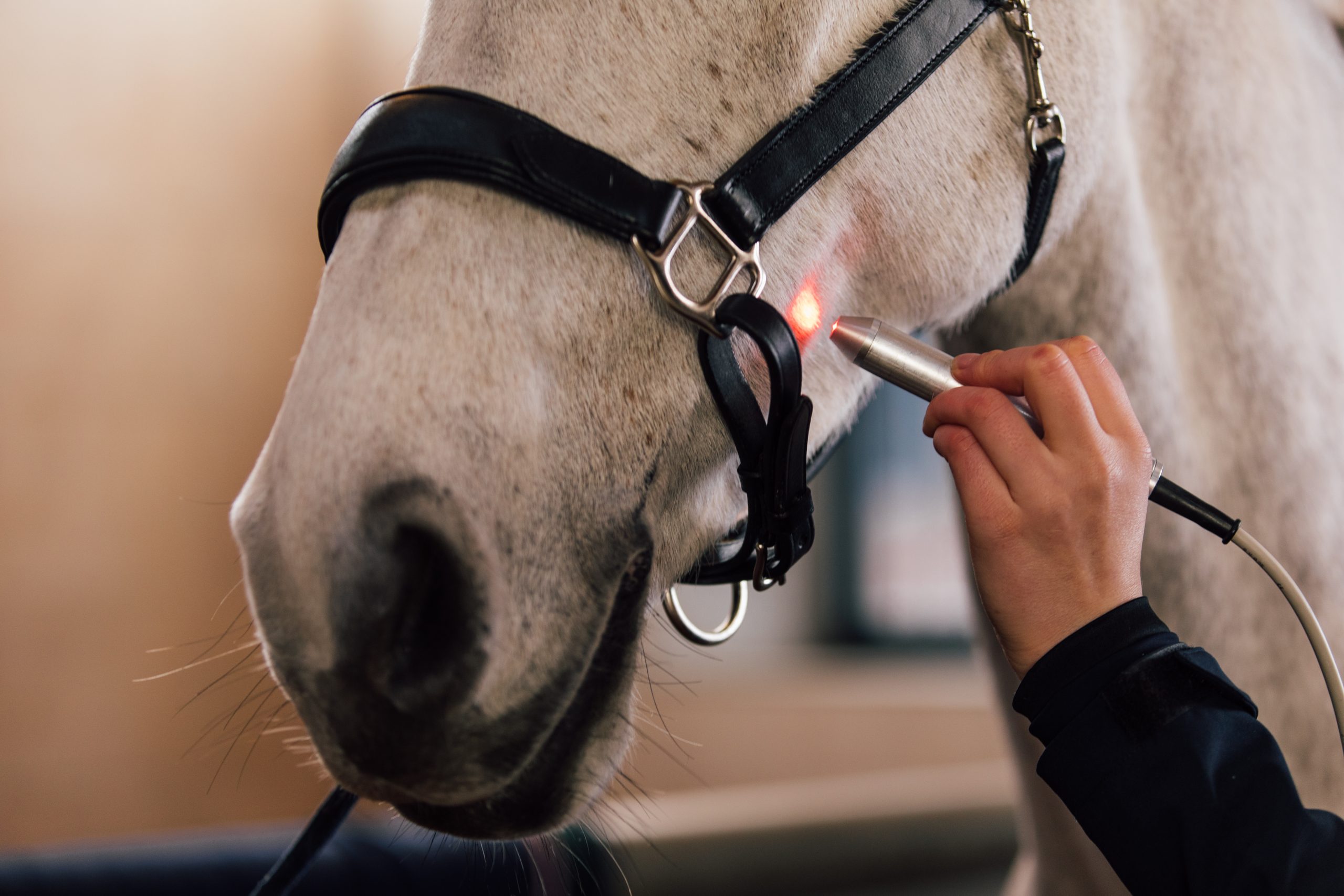Equine Therapy for Children: Emotional and Behavioral Support Discussed
Equine Therapy for Children: Emotional and Behavioral Support Discussed
Blog Article
Laser Treatment in Equine Treatment: A Modern Method to Improving Steed Wellness
Laser treatment has emerged as a crucial technique in equine treatment, making use of concentrated light energy to promote mobile repair and speed up healing from a variety of ailments. By promoting mitochondrial task and enhancing ATP production, laser therapy not only enhances blood circulation yet likewise supplies significant pain relief.
Recognizing Laser Treatment
Laser therapy, a non-invasive treatment method, has actually gotten considerable traction in equine medication due to its efficiency in advertising recovery and discomfort relief. Enhanced ATP degrees expedite cells repair service processes and lower swelling, making laser therapy particularly reliable for treating musculoskeletal injuries, injuries, and other inflammatory conditions in steeds.
There are several sorts of lasers made use of in equine therapy, each with specific wavelengths and power results tailored to various restorative needs. Low-level laser treatment (LLLT), likewise referred to as cool laser therapy, uses lower power degrees to promote cell function without causing thermal damages. High-intensity laser therapy (HILT), in comparison, utilizes greater power levels to accomplish deeper cells infiltration and more substantial healing effects.
Veterinarians make use of various laser tools and techniques relying on the problem being dealt with and the desired depth of cells penetration. Correct training and proficiency are crucial for making certain the risk-free and reliable application of laser therapy, therefore maximizing its restorative potential while reducing threats.
Benefits for Equine Health
With a solid understanding of how laser therapy works, it is necessary to discover its countless advantages for equine health. One of the primary advantages is its capacity to speed up tissue repair work and cell growth. By promoting cellular feature, laser therapy promotes faster injury recovery and help in the regrowth of broken cells. This can be especially valuable in minimizing recovery times for equines experiencing injuries.
Moreover, laser treatment has been shown to enhance blood circulation, therefore boosting blood flow to affected locations. Boosted flow guarantees that necessary nutrients and oxygen are provided much more efficiently, facilitating the recovery process. Additionally, laser treatment's anti-inflammatory impacts assist in decreasing swelling and pain, which is important for the overall health of the equine.
Pain monitoring is one more substantial advantage. By releasing endorphins and obstructing pain signals, laser treatment offers reliable, non-invasive remedy for both intense and persistent discomfort. This can add to improved flexibility and lifestyle for the animal.
Last but not least, laser therapy is a non-invasive therapy choice, lessening the risk of problems connected with even more invasive treatments. Its flexibility and efficacy make it a vital tool in modern-day equine vet medication.
Typical Problems Treated

Another common problem treated with laser treatment is arthritis. Horses dealing with both severe and persistent joint inflammation advantage from the anti-inflammatory results of laser therapy, which aids to reduce discomfort and enhance joint feature. Furthermore, laser treatment is utilized in the administration of injuries. Whether taking care of medical lacerations or terrible injuries, the technique advertises quicker tissue repair service and minimizes the danger of infection.
Horse respiratory problems, such as frequent air passage blockage (RAO), also respond positively to laser therapy. Laser therapy is advantageous in treating hoof problems, including laminitis and abscesses.
Procedure and Safety And Security
Carrying out laser therapy in equine treatment entails a careful treatment to make certain both efficacy and security. Equine Therapy. The process starts with an extensive veterinary evaluation to establish the suitability of laser treatment for the horse's certain problem. Once considered suitable, the therapy location is prepared by cleaning and, if needed, clipping the hair to boost laser penetration
The expert must choose description the correct kind of laser, commonly a low-level laser (LLLT) or a high-power laser (HPL), depending on the problem being dealt with. The laser device is then calibrated to the ideal wavelength, power, and duration settings. During the application, the professional relocates the laser over the targeted area in a methodical way, making certain consistent and even exposure.
Security protocols are purely complied with, consisting of making use of protective eyeglasses for both the professional and the steed. In addition, it is essential to keep an eye on the steed for any signs of discomfort or unfavorable reactions throughout the treatment. Post-treatment, the steed is frequently provided a period of rest to enable the restorative impacts to materialize.

Future of Horse Laser Treatment
As advancements in veterinary medication continue to unravel, the future of equine laser therapy holds substantial assurance. Emerging technologies and much deeper scientific understandings are set to improve and broaden the applications of laser treatment for equines.
In addition, ongoing study into the molecular and mobile mechanisms of laser therapy will likely yield enhanced protocols tailored to details conditions, improving performance and decreasing therapy times. Personalized therapy strategies based on hereditary and biochemical pens could come to be a reality, guaranteeing that each steed receives the most ideal and effective treatment.
In addition, regulatory improvements and standardization of protocols will improve the credibility and dependability of laser treatment in equine technique. Equine Therapy. As these developments remain to arise, equine laser treatment is poised to end up being an essential element of vet treatment, offering enhanced healing and enhanced high quality of life for steeds globally
Conclusion

Report this page